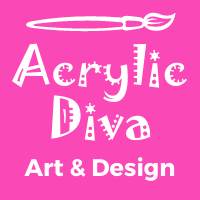The Business of Art or Cue the Crickets
As a young art student, I had this notion that I would paint - and only paint - when I became a full-time artist. Once I graduated, I would be "discovered," a gallery would find me, and the bucks would start rolling in from the sale of my amazing paintings.
Cue the crickets.
The big galleries didn't come calling. No one ever discovered me. But something else happened. I started teaching and making modest sales of my paintings. Before I realized it, I had a career. Now, 30 years later, I look back on that naive young painter and smile.
Almost in spite of myself, I have had a long and flourishing art career. I've had shows and led workshops, been to art retreats and generally had a great time. So I want to pass along a bit of advice to my fellow artists, those just starting and those who are more experienced.
Don't fall for the myth. You know that myth that goes, "I'll paint all day, someone will discover me and the money will roll in." For most of us, it won't happen. We will have to roll up our sleeves and find ways to make money as an artist from other things besides sales of paintings.
This brings me to my "business of art" thesis. Over my three, almost four decades of being an artist, I have found that most of us don't consider ourselves businesspeople. That's a big mistake. As an artist, you run a small business, and you should treat it as a business.
Most businesses have different products at different prices. Consider cars, for example. Ford has an entry-level model and a high-end model. Most companies have something similar. And they diversify. A car company may also sell motorcycles or auto parts.
You get where I'm going here, right?
So how do you diversify in the studio? You can create different sized paintings to cover different price points. You can also create other types of products like prints, cards, and apparel. Whatever you decide to create, make sure people can find you to buy it! Whether it's an online store, an art fair, or your local gift shop, take the time to build your following.
Below are some ways you can create products from your images, and some ways to stay in touch with your fans (or build a fan base if you don't have one already).
Check out my E-Commerce For Artists course to get started with your very own online store!
Build your online presence with a great website.
Stay in touch with your fans with an engaging newsletter.
Read a couple of good books on creative marketing from the pros. Seth Godin and Austin Kleon.
I hope you’ve enjoyed this post. If so, pass it on! Just click on those share buttons below!

